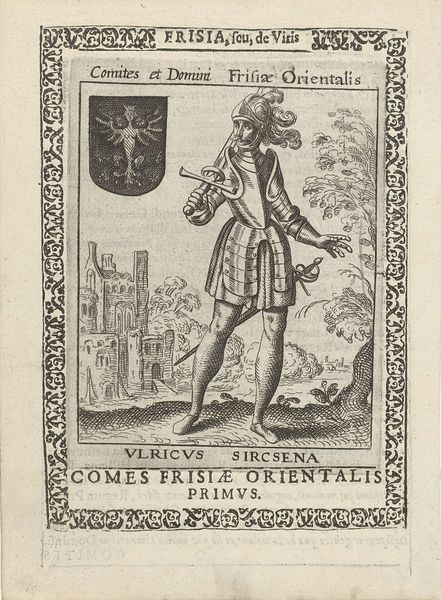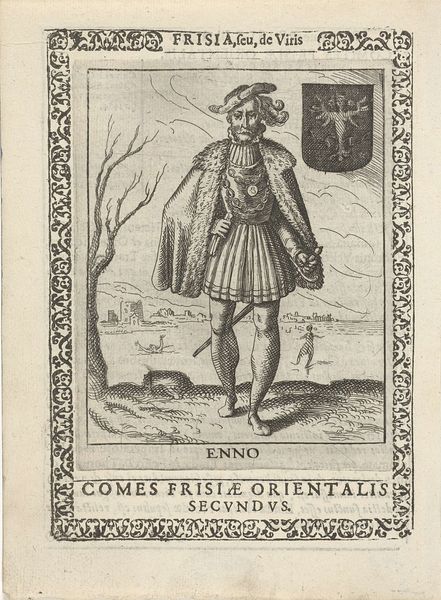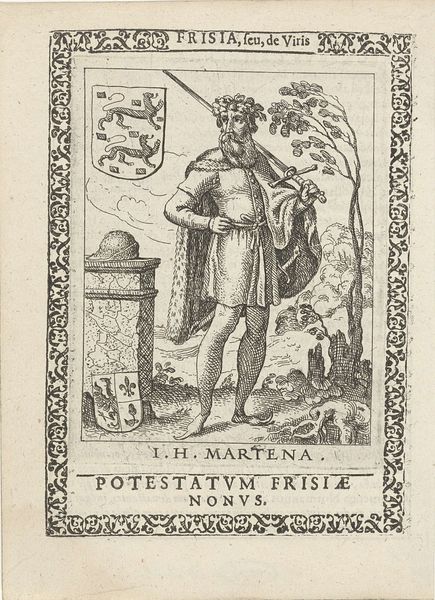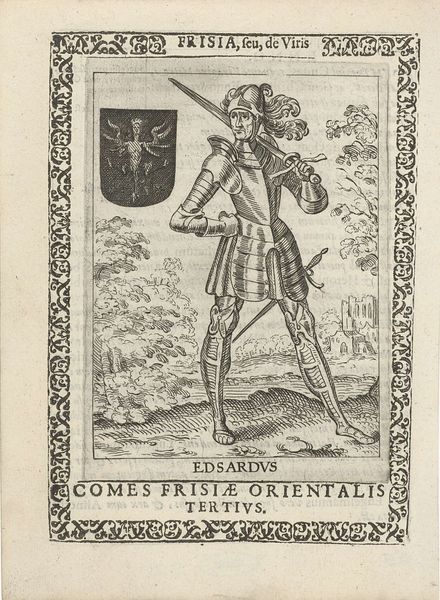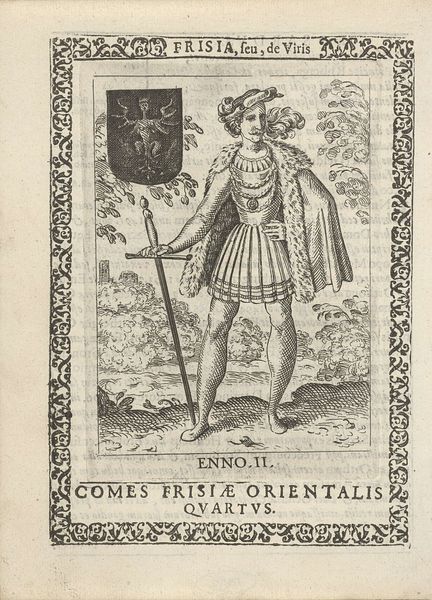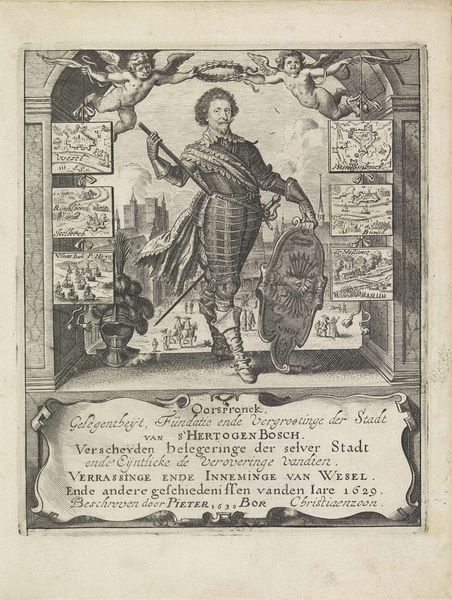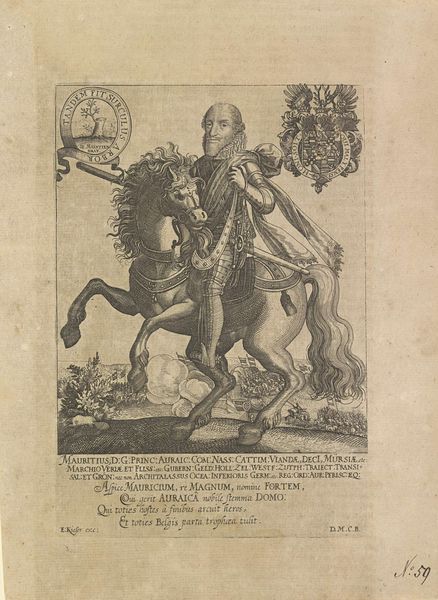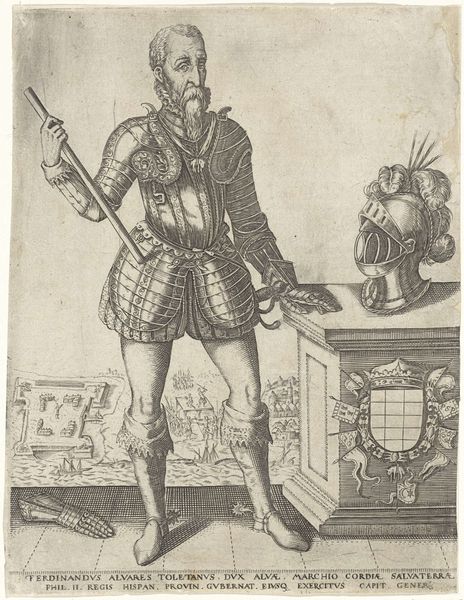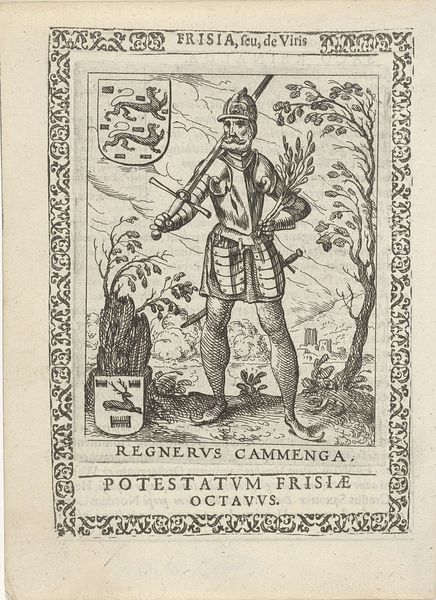
print, graphite, engraving
#
portrait
# print
#
pen sketch
#
old engraving style
#
graphite
#
history-painting
#
northern-renaissance
#
engraving
Dimensions: height 125 mm, width 100 mm, height 158 mm, width 115 mm
Copyright: Rijks Museum: Open Domain
Curator: Standing before us is a print dating back to the early 17th century, around 1618-1620. It is titled "Enno III, zesde graaf van Oost-Friesland" and was created by Pieter Feddes van Harlingen. The Rijksmuseum is fortunate to hold it within its collection. Editor: My first impression is one of formality and perhaps a touch of melancholy. The figure, Enno III, is rigidly posed, his armour suggesting readiness for conflict, but his gaze seems distant. The use of graphite in the engraving adds to a serious atmosphere, doesn't it? Curator: Indeed. The material process is very important here. Engraving, especially at this time, was as much a tool for dissemination as artistic expression. The graphite and the resulting lines are themselves a mark of that social role, think of the skill needed. These prints were important as historical record keeping but it also highlights his role as leader to those beyond his immediate court. Editor: Precisely. The symbolic language employed reinforces his authority. We have the armorial shield prominently displayed and note how his helmet is placed casually, to the side, suggesting victory and control but then also pointing at how quickly one can be at war again, he is still dressed in his war garments for this purpose. Even the landscape in the background contributes, doesn't it, to this sense of established power? Curator: Without question. I am curious though, about what we may be missing, who engraved this? Did they hold favor with the count, or was it a more generic studio offering this likeness for coin? Knowing that level of artisan is vital, surely. Editor: It does highlight the collaborative aspect, right? Someone had to translate the image, physically labouring over it. That element of production deeply influences its meaning and reception. Yet, the choice of symbols, their arrangement, are clearly geared toward presenting a carefully crafted image of power. The ornamentated border, its inclusion with heraldry further serves this effect, rooting Enno III within a specific lineage and historical narrative, perhaps of Frisia and how proud it once was, looking at the inscription? Curator: Exactly! Looking at his clothing material culture allows us a glimpse into courtly life in 17th-century East Frisia, reflecting the availability and trade of those supplies within that society. A fascinating convergence of image, process, and social framework, all within this single sheet of engraved graphite. Editor: Indeed. Reflecting on this piece, I’m struck again by the potent language of symbols. Even in this seemingly straightforward portrait, layers of meaning from military power to cultural heritage reveal themselves, creating a dialogue across centuries.
Comments
No comments
Be the first to comment and join the conversation on the ultimate creative platform.
